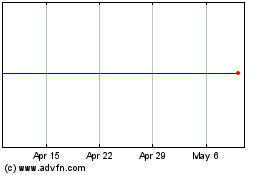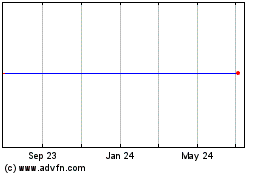Blizzard Does Little To Stir Northeast Power Markets
December 27 2010 - 5:03PM
Dow Jones News
The northeast blizzard has forced households to crank up the
heat and hibernate since Sunday. But this activity has done little
to move the power markets.
The timing of the post-Christmas snow storm is keeping a lid on
electricity prices. While residential consumers are using more
electricity, it is being offset by the sharp drop in industrial
demand typically seen this time of the year.
"Even though it is still cold, we will have less demand because
certain industry just shuts down in the holidays," said Joe Hopf,
president of energy resource and trade at Public Service Enterprise
Group Inc. (PEG), which operates New Jersey's largest utility.
Also, a combination of fluffy snow and gale-force winds kept
high-voltage transmission lines mostly clear, preventing major
outages.
Demand and prices for electricity, one of the most volatile
commodities, tend to peak during hot summer temperatures, with
smaller spikes seen during the winter heating months. Extreme
temperatures have been a boon for power generators this year in the
midst of a shaky economic recovery. Unusually cold weather early in
the year followed by record hot temperatures this summer in various
parts of the country boosted demand and caused power prices to
spike. Sunday's blizzard bookends a tempestuous year.
These conditions have been a reprieve for power generators that
have seen their fortunes fall during the recession on sharply lower
demand and natural gas prices. Industrial demand has started to
pick up but residential and commercial consumption continue to
disappoint. Prices for gas--a fuel used in generation generate that
tends to drive wholesale power market--remain low thanks to vast
supplies being drilled across U.S. shale reserves.
Wholesale power prices topped $147 a megawatt hour nearly two
weeks ago when the cold front moved into the northeast, Hopf said.
In contrast, the wholesale price was at $43.50 a megawatt hour
Monday afternoon across the 13-state grid operated by PJM
Interconnection LLC, which stretches from Pennsylvania to North
Carolina and as far west as Ohio.
Prices seen two weeks earlier weren't just bolstered by cold
weather. Problems with gas pipelines pushed spot-market gas prices
to as high as $19-$20 per million British thermal units in the New
York region, Hopf said. "Some of that had cleared up. It does make
a difference going into the holidays even though it is still cold,"
he said. Those cash prices are back down in the $8-$9 range.
Across New York state, wholesale power prices for the day-ahead
market recently averaged $49.39 per megawatt hours and just over
$80 for New York City, according to the New York Independent System
Operator. Higher prices were seen ahead of Sunday's blizzard.
Even though utilities have fired up most if not all of their
power plants, there is still ample capacity available. Winter
demand is eclipsed by the generation needed during the summer. For
instance, New York state's consumption was at 20,2378 megawatts
this afternoon, well below demand at more than 33,000 megawatts
seen during the heat wave this summer.
Meanwhile, the season's first major storm has caused relatively
few disruptions. Consolidated Edison Inc. (ED), which provides
power to 3.2 million New Yorkers, saw a peak of 9,000 outages in
the city and Westchester County where power lines are above ground,
but this has been reduced to about 3,200 customers Monday
afternoon. PSEG had about 800 customer outages. The Boston Globe
reported that as many as 57,000 customers were without power in
parts of New England during the blizzard but power was being
restored.
However, "if we go into January and it stays cold like it is
now, prices will stay strong enough that you will see coal and gas
run," Hopf said about a potential spike in commodity prices.
-By Naureen S. Malik, Dow Jones Newswires; 212-416-4210;
naureen.malik@dowjones.com
South Jersey Industries (NYSE:SJI)
Historical Stock Chart
From Apr 2024 to May 2024

South Jersey Industries (NYSE:SJI)
Historical Stock Chart
From May 2023 to May 2024
